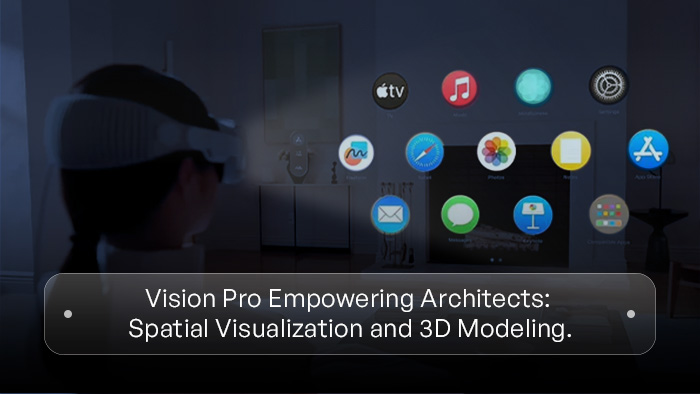

Architecture and design are increasingly benefiting from technological advancements, and Apple Vision Pro is at the forefront of this revolution. This article delves into the applications of Vision Pro in spatial visualization and 3D modeling, highlighting how it empowers architects and designers to bring their visions to life. By harnessing the power of augmented reality and computer vision, Vision Pro revolutionizes the design process, enhances collaboration, and elevates the level of creativity in architectural and design projects.
Vision Pro enables architects and designers to immerse themselves in their designs through augmented reality. By overlaying virtual elements onto the physical environment, they can visualize and experience spaces in real-time. This immersive design exploration allows for better evaluation of design concepts, identification of potential challenges, and optimization of spatial arrangements.
With Vision Pro, architects and designers can create interactive 3D models that can be manipulated and explored in real-world settings. By using gestures and touch interactions, they can adjust the scale, orientation, and materials of virtual objects, giving them a better understanding of how the design will look and feel. This interactive 3D modeling capability enhances the design process, facilitates client presentations, and improves communication among project stakeholders.
Vision Pro enables architects and designers to integrate their designs seamlessly into existing environments. By overlaying virtual elements onto real-world settings, they can assess how their designs fit within the context of the surrounding landscape or urban environment. This contextual design integration helps ensure that the architectural vision aligns with the aesthetics and functionality of the site.
Vision Pro facilitates virtual design reviews, allowing architects, designers, and clients to collaborate in real-time. By sharing virtual models and designs, stakeholders can provide feedback, make annotations, and discuss design decisions, regardless of their physical location. This virtual collaboration enhances communication, streamlines the review process, and accelerates project timelines.
With Vision Pro, architects and designers can enhance client engagement by providing immersive and interactive experiences. Clients can walk through virtual spaces, visualize different design options, and make informed decisions. This visualization capability fosters a deeper understanding and appreciation of the design concept, leading to more satisfied clients and successful projects.
Vision Pro simplifies coordination among project stakeholders, including architects, designers, contractors, and engineers. By sharing augmented reality models and virtual design data, all parties can align their efforts, identify potential clashes, and resolve conflicts early in the design process. This collaborative coordination minimizes rework, reduces costs, and ensures smoother project execution.
To fully leverage the benefits of Vision Pro, architects and designers must invest in the necessary hardware, software, and training. Integrating Vision Pro into existing design workflows requires a willingness to adapt to new technologies and embrace continuous learning. By embracing technology integration and adoption, professionals can unlock the full potential of Vision Pro in their design practice.
As with any digital technology, data security and intellectual property protection are crucial considerations. Architects and designers need to implement robust data security measures, including secure storage and transmission of design data. Protecting intellectual property rights ensures that design concepts and sensitive information remain confidential and secure.
Apple Vision Pro is transforming the architectural and design landscape, empowering professionals to visualize and communicate their ideas with unprecedented clarity and impact. From immersive design exploration to enhanced collaboration, architects and designers can leverage Vision Pro to push the boundaries of creativity and innovation. By embracing this powerful tool, they can create designs that not only inspire but also fulfill the functional and aesthetic needs of their clients and the built environment.
OpenAI DevDay showcases the latest AI innovations, pushing technology’s boundaries in an ever-evolving landscape.
Explore the top 10 database types for software projects, their unique features, and which one…
Explore PWAs: Your FAQs Guide to Integrating Camera, Geolocation & Device APIs. Harness native features…
General Understanding of PWAs and SEO 1. What is a Progressive Web App (PWA)? A…
Understanding Offline-First Approach Basics 1. What is the concept of "Offline-First" in the context of…
General Overview 1. What are cross-platform frameworks, and how do they relate to Progressive Web…